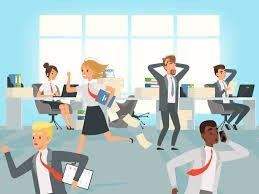Mission, Strategy, & Culture for Youth Residential Facilities
Developing proper strategic plans that match the organization’s culture and mission will be crucial for today’s behavioral health organizations.

The Association of Children 's Residential & Community Services (ACRC) has released the 2025 Trends Report for its members. This annual report, the last of its kind, was created by consultants Tom Woll and Bill Martone. Its purpose is to assist staff and board members of agencies, oversight organizations, and associations in their strategic planning processes. The report highlights the challenges associated with strategic planning. Traditionally, many non-profit organizations engage in extended discussions about their future and direction. However, as the behavioral health landscape evolves with shifting funding, regulations, and client demands, the report suggests that organizations should focus their efforts more narrowly. Instead of formulating five-year plans, strategies should be revised annually. Organizations must concentrate on immediate actions that ensure their survival and allow for growth. The urgency of these immediate actions cannot be overstated. Consider this in the context of a treatment plan for a client. A young person may face multiple issues, such as running away, substance abuse, trauma, and depression. If a youth has too many goals to tackle, achievement becomes unfeasible. Therefore, the youth's treatment provider, in collaboration with the youth, should concentrate on two or three key areas first. Similarly, organizations must prioritize and “select their battles” to realize what is currently achievable.
The trends report further emphasizes the crucial role of aligning the organization's mission with its culture. This alignment is not just a theoretical concept but a practical necessity in the daily work of behavioral health staff. They face demanding jobs, irregular hours, often inadequate pay, and increasing administrative burdens. Yet, they persist in their field, driven by personal passion. Employee retention is a significant challenge for organizations, and addressing employees’ needs and hearing their voices fosters a culture of inclusivity that benefits the entire organization. As our clients yearn for recognition, our employees seek the same attentiveness. This alignment is not just a matter of policy, but a fundamental aspect of our work that we must all strive to uphold.
Finally, the report shares how mental health in schools, LGBTQ services and rights, and homelessness are future themes that should be addressed in services. The report concludes that, as has been seen over the years, those agencies willing to change will survive, while those that do not will fade. Adapting to changing needs is not just a suggestion, but a stark reality that we must all acknowledge. Developing proper strategic plans that match the organization’s culture and mission will be crucial for today’s behavioral health organizations. This adaptability is not just a choice but necessary for our continued relevance and effectiveness.




